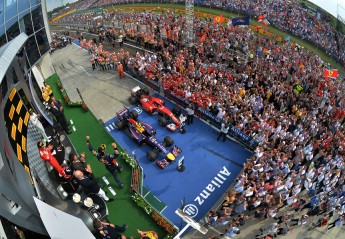Hillary Chinyere
Harare, 19 May 2016
After this week’s in-season testing at the Circuit de Catalunya, F1 teams will shift their focus to the race in the second smallest country in the world.
It happens to be my favourite track on the F1 calender, and the world’s darling too! In fact, you only need to spend a few minutes with me to know that Monaco the place is my dream location. Though we have seen many street circuits in Formula 1 history, Monte Carlo is like no other. I heard our neighbours South Africa were bidding for Cape Town to host its own Monaco-esque F1 street race, with Cape Town Stadium acting as their version of the famed “tunnel”. Speaking of which, Monte Carlo is easily the circuit with the most famous and prestigious landmarks of all tracks on any calendar.
I’m going to list them in the order with which they appeal to me.
The Fairmont Hairpin
Simply known as “The Hairpin”, Turn 6 is one of the most remarkable turns in F1. Fairmont is the name of the hotel situated next to it. It is the tightest and drivers have to apply maximum steering lock in order to make it around the about turn. It also boasts of being the slowest turn, requiring an average speed of 50km/hr which ironically is the speed limit on the streets of Monaco on regular days.
Nouvelle Chicane
A chicane is a series of tight turns in opposite directions in an otherwise straight stretch of a road-racing course, to reduce speed for safety reasons. In the hey days of the circuit, this particular chicane was called Chicane du Port. After significant alterations were made to it in the mid eighties, the chicane assumed a new name Nouvelle Chicane which is French for New Chicane. Turns 10 and 11 constitute the chicane. Nouvelle Chicane is very difficult to navigate without accruing penalties for many an F1 simulation game player.
Portier
The sharp double right-hander which leads to the tunnel, Portier was so named because of Le Portier, one of the Principality’s neighborhoods in close proximity to the track.
The Tunnel
The sweeping curve underneath the tunnel is the fastest point in the race, albeit with a 25% drop in downforce which is one of the challenges the tunnel pose on the drivers. On sunny days, the drivers’ eyes take nearly as long to adjust to the changing light as it takes their cars to come out on the other end. Upon exiting the high speed tunnel, drivers keep a tight racing line as they brake for the Nouvelle Chicane, to avoid losing a place to someone close behind.
The tunnel goes under the Fairmont Monte Carlo, formerly Loews Hotel Monte Carlo. This was necessitated by the unusual manner the hotel was constructed. Instead of building the hotel upwards from the ground, it was built into the Mediterranean Sea and a tunnel was required to allow free traffic flow.
Swimming Pool
Right in the middle of the harbour is the Piscine Swimming Pool complex of two chicanes; a fast one on the entrance and a slower one on the exit.
Casino
The full name is Casino Square, for the Monte Carlo Casino and the park in front of it. It’s significant to me for being the casino in Ian Fleming’s James Bond’s Casino Royale.
Mirabeau
Broken into Mirabeau Haute and Mirabeau Bas, which is Turn 5 and Turn 7 respectively. They are both right-handers, sandwitching The Hairpin. The turns were named after Le Mirabeu, a 70’s hotel which was converted into a residential building in 2007.
Tabac
A fast left-hander given the name after a tobacconist who once operated on the apex of Turn 12, the first one after Nouvelle Chicane.
Others
No part of the circuit appeals to all fans the same, so even though I’m aware of the significance of certain turns and stretches, I have my special ones listed above. However, Saint Devote, Beau Rivage, Massenet, La Rascasse and Antony Hughes are very popular as well.
I’m sure one day I’ll have a lap around the Monte Carlo street circuit on foot! After sipping a few glasses of Cabernet Sauvignon from the Bordeaux region of neighbouring France, of course.

